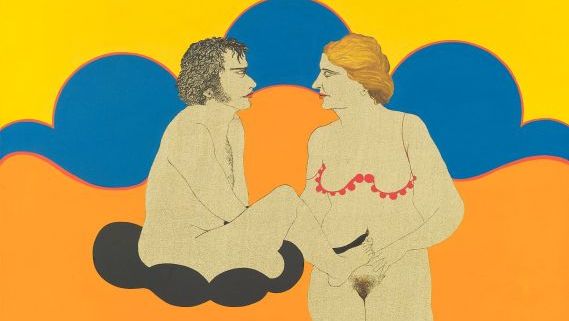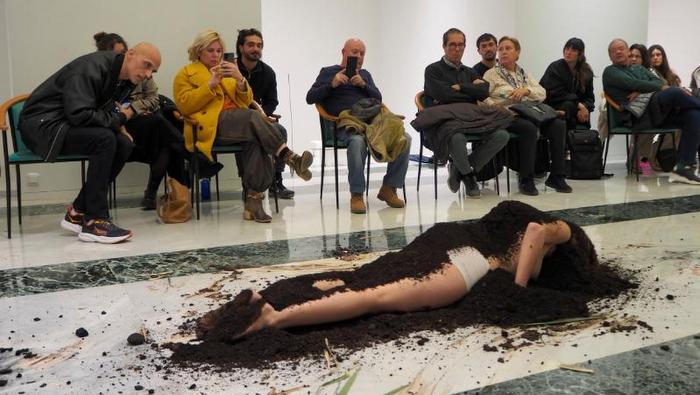With the exhibition, the Kunsthalle Mannheim is showing three artists who only achieved recognition in the art world late in life and are today among important representatives of their time. All three of them came to terms with Surrealism early on and found their own individual visual language in different ways: the unifying factor is their preoccupation with light, space and the body as well as the existential question of self-perception and one's place in the world.
The American Nan Hoover (1931-2008) is one of the pioneers of international light, video and performance art. Her early paintings, most of which have never been exhibited, revolve around the relationship between the sexes and sexuality and are close to Pop Art in terms of colour and formal language. Since the beginning of the 1970s, in her performances, video works and light installations, she has approached a minimalist formal language based on reduction and reflection, in which time is interpreted and made conscious through the medium of extreme slowness and space through the medium of light.
Anneliese Hager (1904-1997) made significant but hitherto under-recognised contributions to the medium of cameraless photography. She was also a gifted surrealist poet and often combined her photograms, which she made with everyday household objects, with her own poetic texts. Hager was one of only three women and the only photographer to exhibit in the now legendary CoBrA exhibition in Amsterdam in 1949. Like the medium in which she worked, however, she was overshadowed by the rise of male painters on the international stage in the 1950s.
The Austrian painter Maria Lassnig (1919-2014) is today one of the most important female artists of the 20th century, but only achieved her international breakthrough late in the 1980s. After the Second World War, she explores Surrealism, tried out Art Informel, but soon found her very own theme: the human body and the self-portrait. In the 1940s, she developed her so-called body-awareness pictures (she herself used the term from the 1960s), analyses of bodily feelings, with which she became the forerunner of feminist body art.
Thus, the unjustly lacking recognition of the work of female artists forms the core of the concern of the exhibition "Hoover Hager Lassnig". The Kunsthalle focuses on three women artists whose work is at least worth rediscovering.
In cooperation with:
Maria Lassnig Foundation, Vienna
Sebastian Fath Contemporary, Mannheim and Nan Hoover Foundation Amsterdam
The exhibition chapter on Anneliese Hager was organised under the title "White Shadows" by the Harvard Art Museums, Cambridge, Massachusetts. The exhibition and tour were funded in part by the generosity of the Daimler Trustees of the Busch-Reisinger Museum Fund at the Harvard Art Museums. The Modern and Contemporary Art programmes at the Harvard Art Museums are made possible in part by the generous support of the Emily Rauh Pulitzer and Joseph Pulitzer, Jr, Fund for Modern and Contemporary Art.
Curator: Dr. Inge Herold, Co-Curators: Christina Bergemann, Dr. Lynette Roth
HOOVER HAGER LASSNIG
10 NOVEMBER 2023–11 FEBRUARY 2024
KUNSTHALLE MANNHEIM | MANNHEIM, GERMANY
On the cover: Nan Hoover, Two and a half months, 1972
Oil and acrylic on canvas
Copyright Nan Hoover Foundation, Courtesy Sebastian Fath Contemporary
Source: Kunsthalle Mannheim















